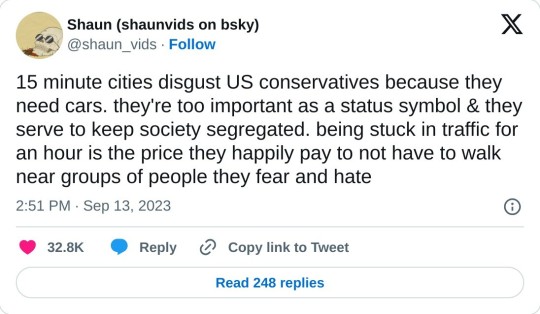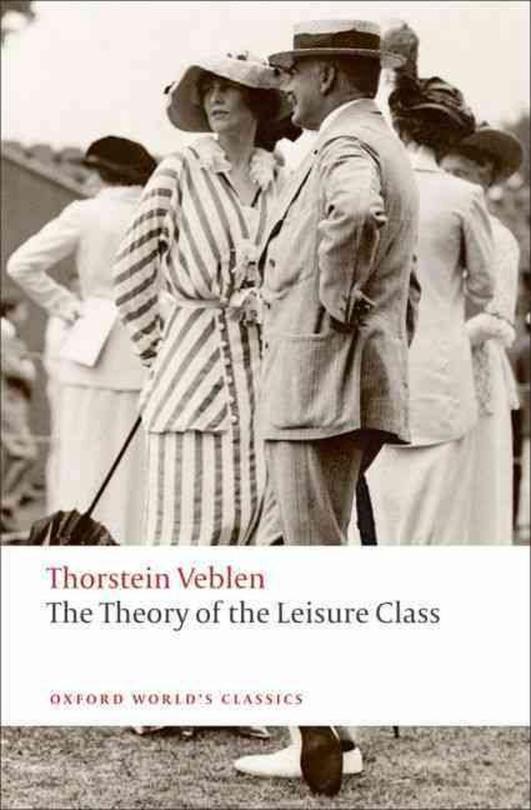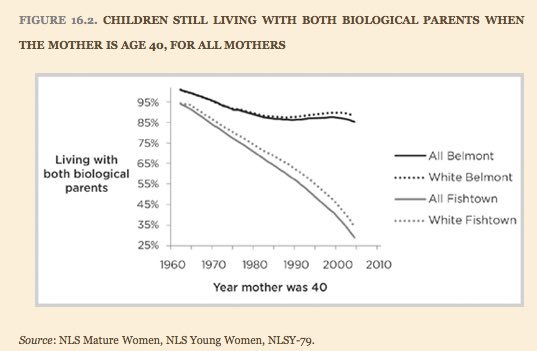#Status Symbol
Explore tagged Tumblr posts
Text
Fabergé Eggs

Fabergé Eggs, perhaps considered one of the most famous examples of exquisite and luxurious craftsmanship to this day.
Fabergé eggs were originally commissioned by the Russian Imperial family in the late 1800s AD.
Tsar Alexander III (10 March 1845 – 1 November 1894) wanted a richly jeweled egg as an Easter gift for his wife, so Russian jeweler Peter Carl Fabergé (30 May [O.S. 18 May] 1846 – 24 September 1920) got to work and produced very first Fabergé egg in 1885 AD.
And like Easter eggs you may find hidden in your shrubs or gutters, these eggs were also intended to contain a surprise inside.
Initially, the first Fabergé egg was to contain a diamond ring, but after specific instructions given by the Emperor, the egg could be opened to find a ruby pendant instead.
Over the course of the next two decades, ten eggs were produced for the family during Alexander III’s reign, starting a dazzling tradition that his son Nicholas II (18 May [O.S. 6 May] 1868 – 17 July 1918) would carry on for his wife and his mother every Easter.
The popularity of eggs-travagant gifts spread well beyond the Imperial family, and soon, other wealthy families began commissioning their own eggs.
The eggs then began to represent great wealth and luxury that owning a Fabergé egg was considered a status symbol.
And with the skill level and time that it took to craft up just one Fabergé egg – up to one year per egg – it’s no surprise they come with such a high value.
The intricate Fabergé egg-making process began by creating a design for the egg and then the outer shell would start to come to life.
The team of goldsmiths would craft the eggs out of precious metals like gold or silver.
They were each decorated with intricate engravings, filigree work and other decorative elements.
And while his competitors used a standard palette, Fabergé wanted to experiment with more colors.
He created resplendent yellows, mauves, and all shades of greens — coming up with over one hundred and forty new colors.
Just as important as its exterior, the Fabergé egg’s interior was given just as much attention to detail.
A team of jewelers would work on creating a surprise to be hidden inside the bejeweled shell.
These surprises could be anything from miniature portraits of the recipients’ husbands to tiny replicas of famous landmarks.
The artists behind these miniature works of art were some of the best miniature painters, sculptors and engravers of that time who used a variety of material, including enamel, precious stones and even hair to create their work.
Finally, once all of the intricate pieces were complete, they were assembled by a team of skilled craftsmen to create the final product.
The egg was then presented to the recipient and would become a treasured family heirloom for years to come.
Unfortunately, the House of Fabergé was forced to close its doors during the Russian Revolution in 1917.
Fabergé and his family fled Russia.
Many of the Fabergé eggs were sold, lost or smuggled out of Russia during this time, but now, many of them are housed in museums like the famous Fabergé Museum in St. Petersburg, Russia.
However, history came full circle when in 2007, with new ownership and direction, the company announced the reunification of the brand with the Fabergé family.
This new chapter set the stage for a total revitalization of the Fabergé name and philosophy, which are in tune with its original values and spirit.
#House of Fabergé#Fabergé Eggs#Russian Imperial Family#Tsar Alexander III#Peter Carl Fabergé#Easter eggs#Tsar Nicholas II#Russian Revolution (1917)#Fabergé Museum#St. Petersburg#Russia#craftsmanship#family health#status symbol#jewelries#House of Romanov#Easter#Happy Easter#Easter Sunday#Resurrection Sunday#eggs
55 notes
·
View notes
Text

A public phone box in a private garden in Cleveleys. There was no phone in it.
3 notes
·
View notes
Text

Me going down the street, showing off my carriage to the peasant crawling babies!
🐴😄🍼
#history#baby carriage#william kent#stroller#babycare#english history#devonshire#1700s#1800s#1900s#inventions#baby history#childhood#little space#luxurious#baby fur#animal history#babycore#historical figures#royalcore#little space community#ponys#babyhood#goats#status symbol#victorian age#world war 1#nickys facts
4 notes
·
View notes
Text
In an early society, anyone who made it past thirty-five was an 'elder.'
"The Stars in their Courses" - Isaac Asimov
#book quote#the stars in their courses#isaac asimov#nonfiction#essay#the power of progression#society#age#elder#status symbol
3 notes
·
View notes
Text
Production focusing on status symbols and luxury goods, on advertising and branding, while ignoring use-value spells death in an age of climate crisis. There are so many vital issues to be addressed--guaranteeing universal access to food, water, electricity, shelter, and transportation; combating rising tides and flooding; protecting ecology; and so on. We must prioritize the production of things necessary to respond to the crisis, not things whose worth resides only in their capacity to produce value. Slow Down by Kohei Saito
#quotes#21st century#nonfiction#kohei saito#slow down#use-value vs value#what is important#human needs#climate crisis#status symbol#luxury goods#environmental damage
5 notes
·
View notes
Text

Shaun (@/shaun_vids)
15 minute cities disgust US conservatives because they need cars. they’re too important as a status symbol & they serve to keep society segregated. being stuck in traffic for an hour is the price they happily pay to not have to walk near groups of people they fear and hate

Shaun (@/shaun_vids)
"you won’t need to drive everywhere!" sounds like a bonus to reasonable people but to a conservative you may as well be trying to sell them on being thrown to a pack of ravenous wolves

union labor with American characteristics (@/ntsfwrk)
Anyone who thinks that driving is correlated to freedom has never had to drive anywhere near a major city. Freedom is having the choice to take the train instead of needing an expensive vehicle that’s more dangerous, inefficient, and stressful to operate.
#i post#twitter#shaun_vids#walkable city#fifteen minute city#public transportation#classism#status symbol#us politics#conservatives#freedom#freedom of choice#lives in my head#rent free
13 notes
·
View notes
Text
By: Rob Henderson
Published: Nov 16, 2019
I was bewildered when I encountered a new social class at Yale four years ago: the luxury belief class. My confusion wasn’t surprising given my unusual background. When I was two years old, my mother was addicted to drugs and my father abandoned us. I grew up in multiple foster homes, was then adopted into a series of broken homes, and then experienced a series of family tragedies. Later, after a few years in the military, I went to Yale on the GI Bill. On campus, I realized that luxury beliefs have become fashionable status symbols. Luxury beliefs are ideas and opinions that confer status on the rich at very little cost, while taking a toll on the lower class.
In the past, people displayed their membership of the upper class with their material accoutrements. But today, luxury goods are more affordable than before. And people are less likely to receive validation for the material items they display. This is a problem for the affluent, who still want to broadcast their high social position. But they have come up with a clever solution. The affluent have decoupled social status from goods, and re-attached it to beliefs.
Human beings become more preoccupied with social status once our physical needs are met. In fact, research reveals that sociometric status (respect and admiration from peers) is more important for well-being than socioeconomic status. Furthermore, studies have shown that negative social judgment is associated with a spike in cortisol (hormone linked to stress) that is three times higher than non-social stressful situations. We feel pressure to build and maintain social status, and fear losing it.
It seems reasonable to think that the downtrodden might be most interested in obtaining status and money. But this is not the case. Inhabitants of prestigious institutions are even more interested than others in prestige and wealth. For many of them, that drive is how they reached their lofty positions in the first place. Fueling this interest, they’re surrounded by people just like them—their peers and competitors are also intelligent status-seekers. They persistently look for new ways to move upward and avoid moving downward. The French sociologist Émile Durkheim understood this when he wrote, “The more one has, the more one wants, since satisfactions received only stimulate instead of filling needs.” And indeed, a recent piece of research supports this: it is the upper class who are the most preoccupied with gaining wealth and status. In their paper, the researchers conclude, “relative to lower-class individuals, upper-class individuals have a greater desire for wealth and status…it is those who have more to start with (i.e., upper-class individuals) who also strive to acquire more wealth and status.” Plainly, high-status people desire status more than anyone else.
Furthermore, other research has found that absolute income does not have much effect on general life satisfaction. An increase in relative income, on the other hand, has a positive effect. Put differently, making more money isn’t important. What’s important is making more than others. As the researchers put it:
Increasing an individual’s income will increase his or her utility only if ranked position also increases and will necessarily reduce the utility of others who will lose rank…[which] may explain why increasing the incomes of all may not raise the happiness of all, even though wealth and happiness are correlated within a society at a given point in time.
Baby Millionaires
You might think that, for example, rich kids at elite universities would be happy because their parents are in the top one per cent of income earners. And they will soon join their parents in this elite guild. But remember, they’re surrounded by other members of the one per cent. Their social circle, their Dunbar number, consists of 150 baby millionaires. Jordan Peterson has discussed this phenomenon. Citing figures from his experience teaching at Harvard in the 1990s, Peterson noted that a substantial proportion of Ivy League graduates go on to obtain a net worth of a million dollars or more by age 40. And yet, he observes, this isn’t enough for them. Not only do top university graduates want to be millionaires-in-the-making; they also want the image of moral righteousness. Peterson underlines that elite graduates desire high status not only financially, but morally as well. For these affluent social strivers, luxury beliefs offer them a new way to gain status.

Thorstein Veblen’s famous “leisure class” has evolved into the “luxury belief class.” Veblen, an economist and sociologist, made his observations about social class in the late nineteenth century. He compiled his observations in his classic work, The Theory of the Leisure Class. A key idea is that because we can’t be certain of the financial standing of other people, a good way to size up their means is to see whether they can afford to waste money on goods and leisure. This explains why status symbols are so often difficult to obtain and costly to purchase. These include goods such as delicate and restrictive clothing like tuxedos and evening gowns, or expensive and time-consuming hobbies like golf or beagling. Such goods and leisurely activities could only be purchased or performed by those who did not live the life of a manual laborer and could spend time learning something with no practical utility. Veblen even goes so far as to say, “The chief use of servants is the evidence they afford of the master’s ability to pay.” For Veblen, Butlers are status symbols, too.
Building on these sociological observations, the biologist Amotz Zahavi proposed that animals evolve certain displays because they are so costly. The most famous example is the peacock’s tail. Only a healthy bird is capable of growing such plumage while managing to evade predators. This idea might extend to humans, too. More recently, the anthropologist and historian Jared Diamond has suggested that one reason humans engage in displays such as drinking, smoking, drug use, and other physically costly behaviors is because they serve as fitness indicators. The message is: “I’m so healthy that I can afford to poison my body and continue to function.” Get hammered while playing a round of golf with your butler, and you will be the highest status person around.
Conspicuous Convictions
Veblen proposed that the wealthy flaunt these symbols not because they are useful, but because they are so pricey or wasteful that only the wealthy can afford them, which is why they’re high-status indicators. And this still goes on. A couple of winters ago it was common to see students at Yale and Harvard wearing Canada Goose jackets. Is it necessary to spend $900 to stay warm in New England? No. But kids weren’t spending their parents’ money just for the warmth. They were spending the equivalent of the typical American’s weekly income ($865) for the logo. Likewise, are students spending $250,000 at prestigious universities for the education? Maybe. But they are also spending it for the logo.
This is not to say that elite colleges don’t educate their students, or that Canada Goose jackets don’t keep their wearers warm. But top universities are also crucial for induction into the luxury belief class. Take vocabulary. Your typical middle-class American could not tell you what “heteronormative” or “cisgender” means. But if you visit Harvard, you’ll find plenty of rich 19-year-olds who will eagerly explain them to you. When someone uses the phrase “cultural appropriation,” what they are really saying is “I was educated at a top college.” Consider the Veblen quote, “Refined tastes, manners, habits of life are a useful evidence of gentility, because good breeding requires time, application and expense, and can therefore not be compassed by those whose time and energy are taken up with work.” Only the affluent can afford to learn strange vocabulary because ordinary people have real problems to worry about.
The chief purpose of luxury beliefs is to indicate evidence of the believer’s social class and education. Only academics educated at elite institutions could have conjured up a coherent and reasonable-sounding argument for why parents should not be allowed to raise their kids, and should hold baby lotteries instead. When an affluent person advocates for drug legalization, or anti-vaccination policies, or open borders, or loose sexual norms, or uses the term “white privilege,” they are engaging in a status display. They are trying to tell you, “I am a member of the upper class.”
Affluent people promote open borders or the decriminalization of drugs because it advances their social standing, not least because they know that the adoption of those policies will cost them less than others. The logic is akin to conspicuous consumption—if you’re a student who has a large subsidy from your parents and I do not, you can afford to waste $900 and I can’t, so wearing a Canada Goose jacket is a good way of advertising your superior wealth and status. Proposing policies that will cost you as a member of the upper class less than they would cost me serve the same function. Advocating for open borders and drug experimentation are good ways of advertising your membership of the elite because, thanks to your wealth and social connections, they will cost you less than me.
Unfortunately, the luxury beliefs of the upper class often trickle down and are adopted by people lower down the food chain, which means many of these beliefs end up causing social harm. Take polyamory. I had a revealing conversation recently with a student at an elite university. He said that when he sets his Tinder radius to five miles, about half of the women, mostly other students, said they were “polyamorous” in their bios. Then, when he extended the radius to 15 miles to include the rest of the city and its outskirts, about half of the women were single mothers. The costs created by the luxury beliefs of the former are borne by the latter. Polyamory is the latest expression of sexual freedom championed by the affluent. They are in a better position to manage the complications of novel relationship arrangements. And if these relationships don’t work out, they can recover thanks to their financial capability and social capital. The less fortunate suffer by adopting the beliefs of the upper class.
This is well-illustrated by the finding that in 1960 the percentage of American children living with both biological parents was identical for affluent and working-class families—95 percent. By 2005, 85 percent of affluent families were still intact, but for working-class families the figure had plummeted to 30 percent.
Children living with both biological parents Affluent families in 1960: 95% Working class families in 1960: 95% Affluent families in 2005: 85% Working class families in 2005: 30% https://www.goodreads.com/book/show/12031563-coming-apart

— Rob Henderson (@robkhenderson) September 29, 2019
The Harvard political scientist Robert Putnam at a Senate hearing said, “Rich kids and poor kids now grow up in separate Americas…Growing up with two parents is now unusual in the working class, while two-parent families are normal and becoming more common among the upper middle class.” Upper-class people, particularly in the 1960s, championed sexual freedom. Loose sexual norms spread throughout the rest of society. The upper class, though, still have intact families. They experiment in college and then settle down later. The families of the lower class fell apart. Today, the affluent are among the most likely to display the luxury belief that sexual freedom is great, though they are the most likely to get married and least likely to get divorced.
The Rabble and the Rich
This aspect of luxury beliefs is worrisome. As I noted in my original luxury beliefs essay, material goods have become more affordable and, thus, less reliable indicators of social class. Status has shifted to the beliefs we express. And beliefs are less expensive than goods because anyone can adopt them. They are not financially costly. And according to Veblen, along with other social observers like Paul Fussell, ordinary people try to emulate the upper classes. The elite want to differentiate themselves from the rabble with their visible badges of luxury. But then then the class below tries to emulate the elite, and the stratum below that as well, until the style has trickled down to the rest of society. And because luxury beliefs don’t have any financial costs, the ‘fashion’ in beliefs trickles down more quickly.
Over time, luxury beliefs are embraced down the social ladder—at which point, the upper class abandons its old luxury beliefs and embraces new ones. Which explains why the beliefs of the upper class are constantly changing. It’s easy to see how this works if we look at actual fashion. The author Quentin Bell, in On Human Finery, wrote “Try to look like the people above you; if you’re at the top, try to look different from the people below you.” The elite’s conspicuous display of their luxury beliefs falls into this pattern. Their beliefs are emulated by others, sending them off in search of new beliefs to display. The affluent can’t risk looking like hoi polloi, after all.
Or consider art. The psychologist Steven Pinker in How the Mind Works writes, “In an age when any Joe can buy CDs, paintings, and novels, artists make their careers by finding ways to avoid the hackneyed, to challenge jaded tastes, to differentiate the cognoscenti from the dilettantes.” Artists want to differentiate themselves from what’s been done before and what others are currently doing. And so do the affluent. Moral fashions change over time for the same reason. Moral fashions can quickly spiral as more and more members of the chattering classes adopt a certain view. Once the view becomes passé, the upper class, aiming to separate themselves, then update their moral inventories. Veblen still reigns supreme, but in a different way.
As he puts it, “What is common is within the (pecuniary) reach of many people…Hence the consumption, or even the sight of such goods, is inseparable from an odious suggestion of the lower levels of human life.” The affluent do not want to be seen with “common” goods. They view them as distasteful. Today, it’s not just common goods they view as distasteful—it’s beliefs too. The affluent, dreading an “odious” designation, resist displaying commonplace beliefs. Those beliefs are for the little people. Instead, the upper class want to be seen displaying luxury beliefs.
Modern neuroscience did not exist in the nineteenth century. But Veblen might have been amused to learn that the same regions of the brain involved in rewards such as eating chocolate or winning money also activate when we receive compliments from strangers or learn that people we will never meet find us attractive. Veblen wrote, “Immaterial evidences of past leisure are quasi-scholarly or quasi-artistic accomplishments and a knowledge of processes and incidents which do not conduce directly to the furtherance of human life.” In his day, the leisure class spent a lot of time accruing useless knowledge and partaking in activities that have the appearance of intellect and artistry, but had no functional utility. These activities didn’t help anyone, but they did make their enthusiasts look good. What might Veblen have made of Twitter, given these observations?
Status Spirals
The economist and social theorist Thomas Sowell once said that activism is “a way for useless people to feel important, even if the consequences of their activism are counterproductive for those they claim to be helping and damaging to the fabric of society as a whole.” The same could be said for luxury beliefs. They are similar to luxury goods, but present new problems. Attaching status to luxury goods or financial standing meant there were limits to how much harm the leisure class could do when it came to their conspicuous displays. For example, fashion is constrained by the speed with which people could adopt a new look. But with beliefs, this status cycle accelerates. A rich person flaunts her new belief. It then becomes fashionable among her peers, so she abandons it. Then a new stylish belief arises, while the old luxury belief trickles down the social hierarchy and wreaks havoc.
[ Via: https://archive.is/JBD4Y ]
==
The people who want to lecture you about your "privilege" are the most privileged of all.
#Rob Henderson#luxury beliefs#Thorstein Veblen#leisure class#ruling class#status seeking#status symbol#virtue signal#virtue signaling#virtue signalling#religion is a mental illness
12 notes
·
View notes
Text
It's available on eBay, from seller AhuraMazda3.

i neeeeeed that fucking tablet
28K notes
·
View notes
Text
A quote from Brené Brown about saying "yes" to rest & play, with personal reflection to follow.
#pastormike1976#you are awesome#don't forget it#encouragement#words#quote#quotes#brené brown#brene brown#courage#say yes#play#rest#culture#exhaustion#status symbol#I'm good#I'm tired#not good#take time to rest#take time#take time to play#laugh#life#work#morethanwork#worthy#youareworthy#loveyourself#selfcare
1 note
·
View note
Text
Gli Italiani e il Sole: Un’ossessione tra Abbronzatura e Salute. Dal fascino dell’abbronzatura alla tanoressia: Vamonos-Vacanze.it esplora il rapporto degli italiani con il sole e le vacanze al caldo
Il sole è da sempre una parte importante della cultura e dello stile di vita italiano, e oggi, secondo Vamonos-Vacanze.it, il tour operator specializzato in vacanze per single, 9 italiani su 10 considerano l’abbronzatura un vero e proprio simbolo di salut
Il sole è da sempre una parte importante della cultura e dello stile di vita italiano, e oggi, secondo Vamonos-Vacanze.it, il tour operator specializzato in vacanze per single, 9 italiani su 10 considerano l’abbronzatura un vero e proprio simbolo di salute e benessere. Tuttavia, il desiderio di avere una pelle abbronzata ha subito trasformazioni nel corso degli anni, passando da un segno di…
#abbronzatura#abbronzatura e salute.#Ambre Solaire#Capo Verde#Coco Chanel#Estate 2024#Eugène Schueller#Huile de Chaldée#Jean Patou#mercato autoabbronzanti#millennial#moda abbronzatura#oli abbronzanti#ossessione per il sole#pelle sana#prodotti solari#protezione solare#Puglia#rivoluzione bikini#salute e benessere#Santo Domingo#Sharm El Sheikh#Sicilia#STATUS SYMBOL#storia dell’abbronzatura#tanoressia#tour operator#Turismo#vacanze al caldo#Vamonos-Vacanze.it
0 notes
Text

First meeting
#stobotnik#doctor ivo robotnik#agent stone#sonic movie universe#i hope you all are noticing what i'm doing with stone's clothes specifically#white shirt pre robotnik black to fit his goth boss then colors when ivo starts wearing red#also i know we all like to think robotnik hated being assigned an agent but i present to you:#he sees it as a symbol of status kinda. stone hates being here#it just feels right to me. it's not that robotnik thinks the agent will be useful at all#he's just pleased that he got one#everyone else has an assistant why shouldn't he?#this ties to a very very stupid headcanon i have#and it's that robotnik's blood type is O negative#HEAR ME OUT he would hate that. he would hate being an universal donnor because he doesn't care about saving lives of humans ew#but then stone is also O negative so that means robotnik can receive blood from him if necessary#and that's mostly the reason why he was chosen to be his assistant#ivo is too important to die! and O negative blood isn't that common#Stone knows but probably no one told robotnik#then of course imagine stone getting injured and needing blood and ivo is like wait i can do that it doesn't matter what his blood type is#you get the point#i think. i'm pretty sure there was a point#oh well#oh the no hr joke. they're a shady goverment organization i don't think they treat their people that well#that being said maybe robotnik's treatment of stone was the reason they had to get an hr department who knows
5K notes
·
View notes
Text
I don't know this for sure, but one thing the bigger hood probably does is contain a bigger engine. But even that isn't certain. And even if it does it probably only provides unused torque that would only practically be applied if you were towing something massive like a multi-car trailer or a yacht. Not common activities.

Saw this Trucks Discourse on facebook and I'm not part of that world but yeah that one on the left is delightful and I really had no idea just how wasteful and pointless the other kind is until this comparison
75K notes
·
View notes
Text

#vampire hunter d#vhd#art#illustration#I think I like best how it's a recall of klimt's figures but in contrast D is alone - an emphasis of his solitude#The gold surrounding him a symbol of his status and how above it all he his - looking past us to something we can't even imagine#Don't forget to check out the VHD Zine ! P-O opened yesterday ( can't believe Saiko of all people is in it omg )#also yeah ~ I'll be making prints of it~#I have to get things into order but do keep an eye out if you're interested!#I think it'd be cool to look into gold foil too ooh ꒰´͈ 0 ॣ`͈⌗꒱💖#Hmm ~ but yes the motif I had going into this drawing was the “horseman of death”#makes me think about the brothers and which ones they would symbolize of the the remaining horsemen....#anyways have a wonderful day ! (❀ •̀ᴗ•́ )っ♡#and now onto the next D drawing🌚
5K notes
·
View notes
Text



was thinking abt how anya sleeps by the polle statue. which is motion activated to start talking.
+ i like drawing polle as a Character
#now originally i drew this under the same kind of premise as the animatic i did#in that it Is in reality just a statue but is. subconsciously treated as alive and as it’s cartoon self? if that makes sense#but i was thinking abt what if polle Was alive. a toon put on the tulpar as a shitty morale boosting animal that Isn’t you friend#but i worry this would change too much abt the story. i wouldn’t want to add too much levity/fluff#mouthwashing#the art gallery#polle being a toon instead of a statue kinda cheapens it’s effect probably#like i think it worked In The Little Bit like in the animatic. but not through the whole game#plus also it’d probably really muddy his like. symbolism. of like thr company and the baby#so i do have a couple more doodles but (shrugs worriedly)
6K notes
·
View notes
Text
The regulations were designed to support English industry, and to identify status.
"Normal Women: 900 Years of Making History" - Philippa Gregory
#book quote#normal women#philippa gregory#nonfiction#regulations#industry#england#status symbol#sumptuary laws
0 notes
Text
Revolutionizing Automotive Excellence: The Birth of Lamborghini

View On WordPress
#Automotive design#Aventador#Exotic cars#High-Speed Beast#Huracán#Iconic sports cars#Italian automaker#Lamborghini doors#Luxury vehicles#Performance engineering#Prestige automobiles#Speed and power#Status Symbol#Supercars#V12 engines
0 notes